The Violent Settlers Are Just Doing Their Job
From Gaza’s man-made famine to West Bank pogroms, the system is doing exactly what it was built to do.
Quick editor’s note for new readers: I aim to send this out every Saturday or Sunday. It opens with a short reflection on what’s been on my mind, followed by a weekly news roundup organized by region—Gaza, the West Bank, Israel, the US, and occasionally elsewhere. The stories come from American, Arab, Israeli, and European outlets, as well as firsthand testimony, with links to the sources provided throughout, along with my own reporting.
This week’s edition is longer than usual—there’s a lot on my mind. If the length feels daunting, I urge you to at least read the intro before the roundup.
Within the first hour of my January 2024 trip to Masafer Yatta—the cluster of 19 communities in the South Hebron Hills featured in No Other Land—settlers and soldiers stormed the village I was visiting. It was, for the residents of At-Tuwani, a typical afternoon. For decades, they’ve faced relentless demolitions and violence at the hands of settlers, soldiers, and the state. The government designated the area a military training zone in the 1970s, and just last month cleared the final legal hurdle to greenlight its full demolition and expulsion.
I’d been sitting with Zakaria Al-Adra in his home, drinking tea and speaking with his family. He had just been released from the hospital after two months. On October 13, 2023, a settler had walked down from an illegal outpost a few hundred meters up the hill and shot him in the abdomen. As I wrote in Zeteo last year:
“The bullet that struck him—a ‘dumdum’ designed to expand on impact and create a larger wound—shattered four of his ribs and tore through his internal organs. He had undergone 10 surgeries, losing half of his pancreas, his entire spleen, and 20 centimeters of his colon. He was fitted with an external colostomy bag, but the stoma, the opening in his abdomen where the bag attaches, was often infected. He had lost 60 pounds. His colon had not healed properly, but doctors believed he was too weak to go back under the knife.”
In other words, Zakaria was in bad shape. His wife, Shoug, placed their newborn twins in my lap so he could reach over and feel their skin. His other children played around us as he tried, haltingly, to explain what happened the day he was shot.
Then his cousin Basel—who, a year later, would win an Oscar for No Other Land—got a text that the settlers had arrived. He grabbed his camera, and I followed him to the car. We drove uphill to the farmland, where ten men in military fatigues with large guns were shoving local shepherds around. Based on their vehicles, they were likely a mix of IDF soldiers and settlers armed and outfitted by the Israeli government since October 7—part of the so-called “Regional Defense Battalions.”
They shouted and pointed rifles at the crowd. One of them shoved an elderly man to the dirt and kicked him. The sheep had scattered, but the shepherds stood their ground. After a standoff, the armed men got in their trucks and drove back up the hill. The residents of Masafer Yatta, despite the daily attacks, are committed to nonviolent resistance.
Back in the village, Zakaria hadn’t moved. I asked what it was like to live with the knowledge that the man who nearly killed him could return at any moment. He shrugged and said, “That’s our life here.”
That man—Yitzhak Nir—was never charged. He testified that, as part of the Ma’on Farm outpost’s state-armed civilian security team, he had received an intelligence tip that villagers in At-Tuwani were planning an attack. He claimed that “30 to 40 Arabs” confronted them, yelling and throwing stones before he fired. The whole incident was caught on film, and none of what he said was true.
“To them, Palestinian lives aren’t worth living,” Zakaria’s lawyer told me. “Nir smiled through the entire hearing—like he’d just stepped on a cockroach.”
This past Monday, Israeli settlers drove a bulldozer through the nearby village of Umm Al-Khair, destroying olive trees, ripping out fencing, and severing a vital water pipe—part of a long pattern of attacks on Palestinian water access in the South Hebron Hills. When villagers approached the bulldozer, the settler behind the controls tried to run them over, then swung the blade into Ahmed Hathaleen, knocking him unconscious.
Moments later, a second settler, Yinon Levi, showed up. He shouted at the crowd, pistol-whipped a man filming him, then opened fire toward the village center and a group that included four small children. A bullet hit Awdah Hathaleen, Ahmed’s cousin, in the chest. Awdah, a 31-year-old father of three, had been away from the commotion, standing outside the community center where he worked with Umm Al-Khair’s youth.
Tynan Kavanaugh, an American medical student visiting the village, told me Awdah was still conscious and speaking softly as he tried to save him. The bullet had punctured his lung. Without medical supplies, Kavanaugh tried to improvise a chest tube. As more settlers and soldiers arrived, he said he could hear them laughing as Hathaleen’s lung collapsed and he went into shock. He died on the ground and was taken away in an Israeli ambulance.
After the shooting, dozens of Israeli soldiers and police arrived in the village. They didn’t speak with a single Palestinian eyewitness. Instead, they herded villagers into a fenced-in area. Levi, the shooter, mingled casually with the officers, smoking cigarettes and pointing out people he claimed had thrown stones. One by one, soldiers pulled each person from the crowd—including the concussed and wounded Ahmed—blindfolded and handcuffed them, then hauled them off to jail. An Israeli-American activist who confronted Levi said he told him that he was “happy” he’d killed someone.
The next day, the villagers couldn’t bury Awdah—his body was still in Israeli custody—but they held a memorial anyway. Soldiers stormed the mourning tent, threw stun grenades, and beat grieving relatives.
Also on Tuesday, Levi appeared in court. Two Knesset members, including MK Limor Son Har-Melech, stood by him. “I came here today to support Yinon Levi—the pioneer—who is protecting our national land for all of us,” she said.
Levi, like the man who shot Zakaria, smiled through the hearing, and was released to three days of house arrest. On Friday, a judge refused to extend it, citing supposed new evidence that the bullet wasn’t his, and that he acted in self-defense to "prevent an event involving dozens of [Palestinians] who were throwing stones"—despite video evidence clearly showing otherwise.
Levi was already infamous in the South Hebron Hills. Activists had shown me his picture when I was there and warned that all the hilltop settlers are dangerous, but Levi is a true psychopath. He’s the founder of Meitarim Farm, an illegal outpost, and runs a construction company that regularly wins government contracts to demolish Palestinian homes. Since October 7, he’s also worked in Gaza as a demolition contractor for the IDF, paid per building destroyed. In one of Biden’s only gestures toward Palestinian rights, he placed sanctions on Levi and a handful of other violent settlers, before Trump lifted them on his first day back in office.
In April, the Israeli government rewarded him and his outpost with 19 state-funded ATVs “for security.” At the ceremony, Finance Minister Bezalel Smotrich singled out Levi and praised him for “grabbing massive territories.” Since then, Levi has been filmed driving an ATV onto Palestinian property, scaring livestock and terrorizing residents.
“The heroic and pioneering settlers who live here are doing Zionism,” Smotrich said. “We are here to build with them and to settle the land.”
Awdah Hathaleen was a beloved teacher and human rights activist. A month before his death, at the invitation of a synagogue, he flew to the U.S. for an interfaith speaking tour. At SFO, he and his cousin Eid were detained and deported, despite having valid visas.
A year before he was killed, Awdah published a piece in +972, describing a week of demolitions and violent settler raids: In Umm al-Khair, the occupation is damning us to multigenerational trauma. “I saw the first bulldozers arrive in my village 17 years ago,” he writes. “Now, after the most brutal weeks in our history, my son will carry similarly painful memories.”
“The demolition forces enter the village. All the children run to their mothers, who scramble to salvage whatever they can from their homes before it’s too late. Everyone watches on anxiously to see who will be made homeless today… Our children ask us why this is happening, but we have no answers…
I’ve tried to shield my 4-year-old son from this harsh reality as much as possible, so that he will not have to carry the same memories that I did. But sometimes, no matter how good a father you are, there are things you cannot control …
He even knows some of the settlers by name. Sometimes I tell him that they went to jail; I’m lying, but I want to make him feel safe …
Since the attacks, my son has started stuttering — an entirely new symptom, and one that terrifies me. The doctor told us that the best treatment for stuttering is a safe environment. But this is what we cannot guarantee for our children: in Umm al-Khair, no one is in a safe place.”
On Wednesday, settlers were back to bulldoze more of the village’s land. Levi is out of house arrest, facing no charges. There’s nothing stopping him from returning.
Meanwhile, seventeen Palestinians in Umm Al-Khair have been arrested since the shooting. At least four remain in custody, without charge, held solely on the word of the man who shot and killed their relative and neighbor. Israeli authorities continue to hold Awdah’s body—part of Israel’s policy of “postmortem detention.” More than 70 women from Umm Al-Khair are on hunger strike until all of them are released.
Yesterday, near Aqraba in the northern West Bank, settlers shot and killed another Palestinian—24-year-old Mo’in Asfar, the third killed in two weeks. At least seven others were wounded by gunfire. Details are still emerging, but the pattern is familiar: settlers establish an outpost on Palestinian farmland beside a village, launch regular attacks, and escalate until a settler opens fire, or the community picks up and leaves.
Yossi Dagan, who heads the local settler council, responded to the killings with a brazen inversion: “We are witnessing a wave of attempted terror attacks and life-threatening incidents in the communities, and especially at agricultural farms … We firmly insist on protecting security and human lives."
Just days earlier, on the same day as the murder in Umm Al-Khair, Smotrich was back in the West Bank for another ceremony, this time distributing 29 more ATVs to illegal outposts, along with drones, night vision goggles, and other military-grade gear. “Today we are equipping these pioneers with the tools to protect their homes, maintain the territory, and deepen our hold on the Land of Israel,” he said.
Smotrich was, as always, saying the quiet part out loud: The settlers in the West Bank are simply doing their job. The more violent they get, the more the Israeli government will reward them with weapons, funding, and legal cover to drive the Palestinians out. It makes no difference how the Palestinians resist—in places like Masafer Yatta, nonviolent resistance has been met with demolitions, arrests, and relentless assault. In cities like Jenin and Tulkarm, where armed groups have formed in refugee camps to defend their territory, they’ve been met with overwhelming military force. It’s a campaign of state-backed terror in the service of ethnic cleansing.
For years, liberal Zionists portrayed the settlement movement as a radical fringe, separate from the Israeli state. But the illusion is long shattered. A disproportionate amount of state funding goes to settler housing and infrastructure in the West Bank. The government openly arms extremist settlers and parades them as pioneers. The military joins their raids, protects their land grabs, and arrests their victims. Courts provide the most violent among them with impunity while fast-tracking demolition orders. Watching the video of soldiers laughing and chatting with a killer as they haul off the wounded relatives of his victim—it’s clearly not rogue behavior, but the system working as intended. And while some Israelis may look down on the settlers, they’ve failed to mount any meaningful political opposition. Many still see them as Israel’s “bulletproof vest,” guarding the homefront from the “dangers” east of the Green Line.
At the end of Awdah Hathaleen’s 2024 piece, he wrote, “Amid all of this injustice, we often feel forgotten, lost, or hopeless. Sometimes we wonder: why do Israelis see us as terrorists and enemies? Why is the world not acting to achieve justice for Palestinians? But most of the time, we feel tired. The attacks, the raids, the demolitions: we think about them all the time. I always say that I wish fate hadn’t brought us to this point. But now we are stuck here; there’s no way to leave.”
For those who’d like to learn more, here’s my What’s happening in the West Bank? starter pack:
You Don't Understand How Bad It Is Here: My firsthand report on the everyday brutality of occupation.
The Annexation of the West Bank Is Complete: How Smotrich exploited the Gaza war to stage a bureaucratic coup and empower settlers to run wild.
In Ruins: Archaeological Warfare in the West Bank: How Jewish biblical and historical claims to “Judea and Samaria” are weaponized for land dispossession.
The Hills Have Eyes: My interview on Chapo Trap House where I break down all of the above.
If you find my writing valuable, I ask two things:
If you can afford it, consider becoming a paid subscriber to help keep this work going. It comes out to $1.54 per issue—less than a cup of coffee—and helps subsidize free access for those who can’t pay. My work, including trips to the West Bank, is entirely self-funded.
If that’s not an option, I always appreciate you sharing this newsletter on social media or with anyone you think might benefit from reading it. Even just tapping the heart button acts as algorithm fuel.
Here’s this week’s roundup.
Gaza
ICYMI
I investigated the information warfare specialists—including a Columbia teacher—who helped dismantle Gaza’s UN aid network, install the militarized GHF, and spin the narrative around famine and the daily massacres of starving Palestinians. (Drop Site)
“Carefully Planned and Controlled Starvation”
At least 176 people in Gaza have been killed by Israel’s imposed starvation, including 93 children. (Al Jazeera)
The Guardian reported on how Israel has spent years calculating precisely how to “calibrate hunger” in Gaza—the “mathematics of starvation”—knowing every calorie needed to prevent mass death, then blocking just enough to keep the population malnourished but not quite starving. That formula has now tipped into full-scale famine. (Guardian)
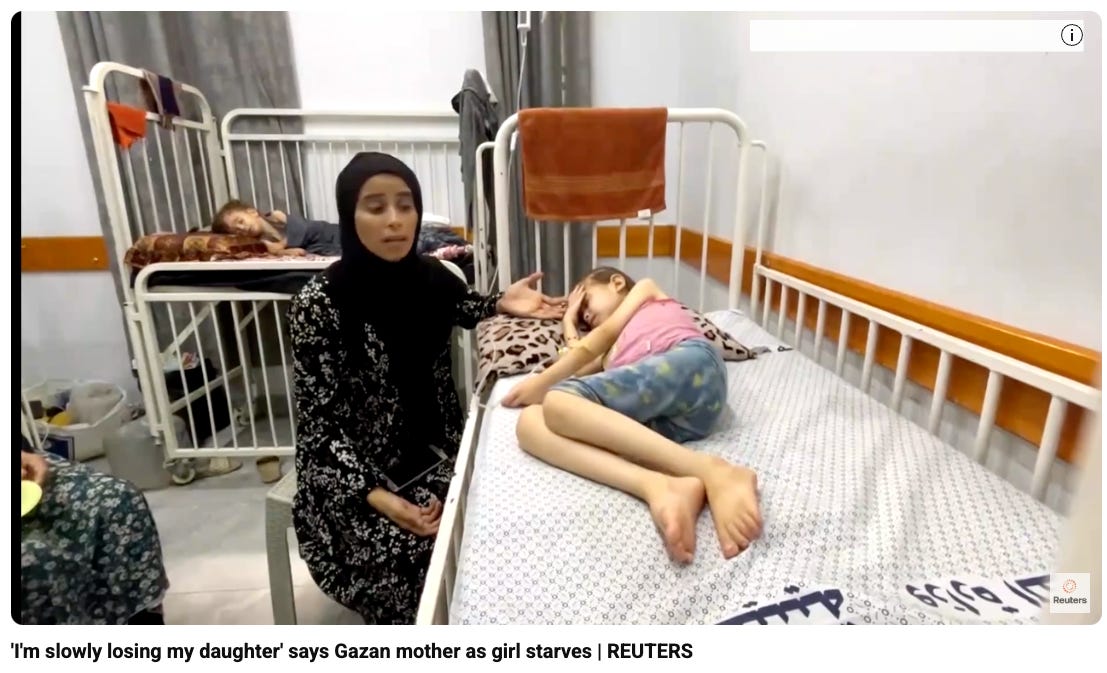
The World Food Programme warned that Gaza’s starvation crisis is “unlike anything we have seen in this century,” comparing it to the 1980s Ethiopian famine. (MEE)
“The worst-case scenario of famine is currently playing out in the Gaza Strip,” the IPC, the UN’s top hunger monitor, warned, confirming that famine thresholds have been passed for food consumption in most of the Strip and for acute child malnutrition in Gaza City, where over 33% of people now go a full day without food and malnutrition rates have quadrupled since May. (WaPo)
Global famine expert Alex de Waal said, “I’ve worked on this issue for four decades, and since World War II there has been no case of famine as carefully planned and controlled as this one. Every stage was foreseeable.” (Haaretz)
In a Times op-ed titled Netanyahu Is Choosing to Starve Gaza, de Waal writes that “Israel and the international community have a window of opportunity to deliver lifesaving aid to millions of people,” but they seem to be deliberately missing it.
GHF “has so thoroughly ignored conditions on the ground that it raises the question of whether Israel has been intentionally engineering starvation in the strip. The aid provided by the G.H.F. is inadequate by several standards. The group’s ration boxes, according to nutritionists, are unbalanced and lack nutrients that are essential for starving populations, especially children. A malnourished child requires specialized food such as Plumpy’Nut, a peanut-based therapeutic formula — not pasta or lentils, which the G.H.F. offers instead. The most severely malnourished need intensive care in a hospital. To prepare food included in the ration boxes, people also often require fuel and clean water, both of which are in short supply in Gaza…
The U.N. and other experienced aid organizations stand ready with the resources, the skills and the proven blueprint to provide essential humanitarian relief. If Prime Minister Benjamin Netanyahu of Israel decided tonight that every Palestinian child in Gaza should have breakfast tomorrow, it could undoubtedly be done …
To end starvation in Gaza, Israel must allow humanitarian-aid professionals to do their job. It must facilitate the movement of U.N. aid convoys without onerous checks and delays. It must help establish the necessary monitoring measures to ensure aid reaches those who need it most. It must assist Gaza’s hospitals in setting up intensive care units for the many malnourished children at death’s door."
With baby formula virtually impossible to find, Gaza’s mothers are attempting to feed babies tea, lentil soup, herbs, and tahini, none of which can stop the wave of severe malnutrition now devastating children under two. (France24)
A Gazan writer, A. Khalil, documented the slow starvation of his friends who are sacrificing their own bodies to keep their children alive. “My daughter should weigh more,” Riham, 24, told him. “She needs real food, eggs, fruits, and vegetables, but we can’t find any of it. I breastfeed when I can, but I’m barely eating. There’s not enough food for me, so how can I have enough milk for her?” Sundus, a mother of two, has stopped eating bread so her five- and three-year-olds won’t go hungry: “If I don’t, they start crying, and I can’t stand seeing them cry.” Khalil writes, “They are now tiny, with fragile bodies that haven’t been given a chance to grow healthy.” “Their immunity is so weak,” Sundus said. “Any virus or bacteria gets to them immediately.” (Nation)
Airdrops in Gaza, while making for nice pictures, have killed at least five people, cost up to 42 times more than trucks, and often scatter or destroy aid mid-flight. (NYT)
UNRWA Chief Philippe Lazzarini noted that during the ceasefire earlier this year, UNRWA and partners safely brought in 500–600 aid trucks per day. Today, 6,000 UNRWA trucks remain blocked outside Gaza. (X)
The Paper of Record
The New York Times updated a story on a starving Gazan toddler to include his pre-existing conditions after pressure from pro-Israel figures.
Semafor later reported that “The pushback from pro-Israel voices after the story went live prompted a flurry of activity within the Times” that resulted in the Editor’s Note. (Semafor)
The New York Times editorial board called Gaza’s hunger a “moral crisis” and conceded that Israel dismantled the UN aid system and replaced it with just four militarized GHF sites—but still suggested Hamas could “end the crisis” by surrendering despite Israel’s continued bad faith negotiations, downplayed the Times’s own reporting that Israeli military officials found no evidence of aid theft as merely “questioning the rationale,” and pinned the blockade on Netanyahu’s far-right allies, as if he’s fought against it. (NYT)
What They’re Saying Over There
Haaretz reports that as mass starvation in Gaza becomes undeniable, Israeli leaders, diplomats, and media figures are waging a hasbara campaign to deny the famine’s reality, obsessing over a single photo of a starving child and insisting he had a genetic disorder, while ignoring the thousands of other visibly malnourished children and UN-verified data. (Haaretz)
The Coalition for Jewish Values (CJV), which represents over 2,500 Orthodox rabbis, called it blood libel to say Rep. Randy Fine supports starving children just because he told Gaza to “starve away”—that was, in fact, “moral clarity and courage”—and pointed out that he now wears a yarmulke. (INN)
Days after publishing “The Price of Flour Shows the Hunger Crisis in Gaza” for The Free Press, Amit Segal, one of the most influential journalists in Israel, changed his mind, telling The New Yorker that actually, he doesn’t think there’s hunger in Gaza and that “90 percent” of reported starvation deaths are false. (TNY)
Shai Davidai, the disgraced ex-Columbia professor accused of harassment by over 50 students, believes that only he and Israel can save Gaza from hunger:
On the other hand, some are deriving pleasure from Gaza’s suffering. Take two minutes to watch this clip from the popular Israeli podcast, “Two Nice Jewish Boys”:
Killing Fields
Since the Gaza Humanitarian Foundation began operations in May, Israeli forces have killed more than 1,373 Palestinians seeking aid—859 near GHF-run sites and 514 along food convoy routes—according to the UN human rights office. (Quds)
A former US Special Forces officer and GHF contractor, Anthony Aguilar, described the aid sites as the “Gaza Olympics,” where young men sprint through live gunfire to grab food in under ten minutes, while women, children, and the elderly are left with nothing. (Haaretz)
The Washington Post reported on a similar scene on Wednesday, in which “‘Hundreds of thousands’ of aid seekers who had been waiting for hours surged to within 100 meters of the checkpoint, and Israeli troops began to fire rifle and artillery rounds.” Despite the fact that over 50 people were killed and more than 600 injured, Israeli military officials claimed troops fired only warning shots to keep the crowd away and said they were not immediately aware of any casualties. (WaPo)
On Thursday, Israeli forces shot and killed at least 91 Palestinians as they waited for food at the Zikim crossing and other aid points. Dozens more aid seekers were killed on Friday and Saturday. (Guardian, Haaretz)
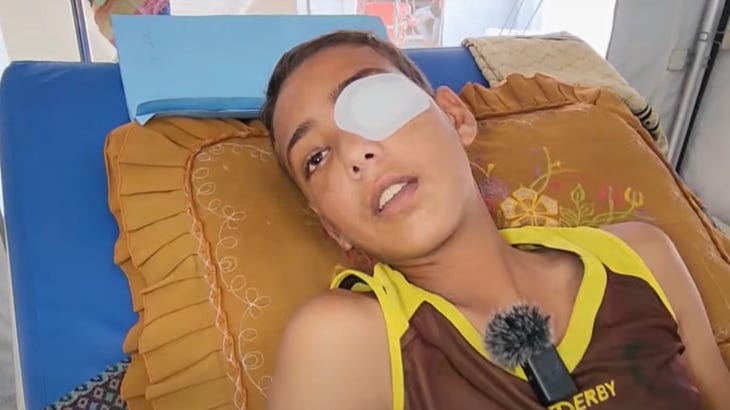
Reminder: Experts have warned since the blockade began that consolidating Gaza’s hundreds of aid sites into four militarized, remote distribution points made this outcome inevitable.
Actually, Everything Is Fine
Ambassador Mike Huckabee and Special Envoy Steve Witkoff took a field trip to the GHF aid site in Rafah to “level set the facts on the ground” for Trump. After, Huckabee called GHF “an incredible feat” and tweeted then deleted (in under a minute), that Gazans “love Trump,” and refer to “one of the few” buildings left standing in Rafah as “Trump Tower.” (Telegraph)
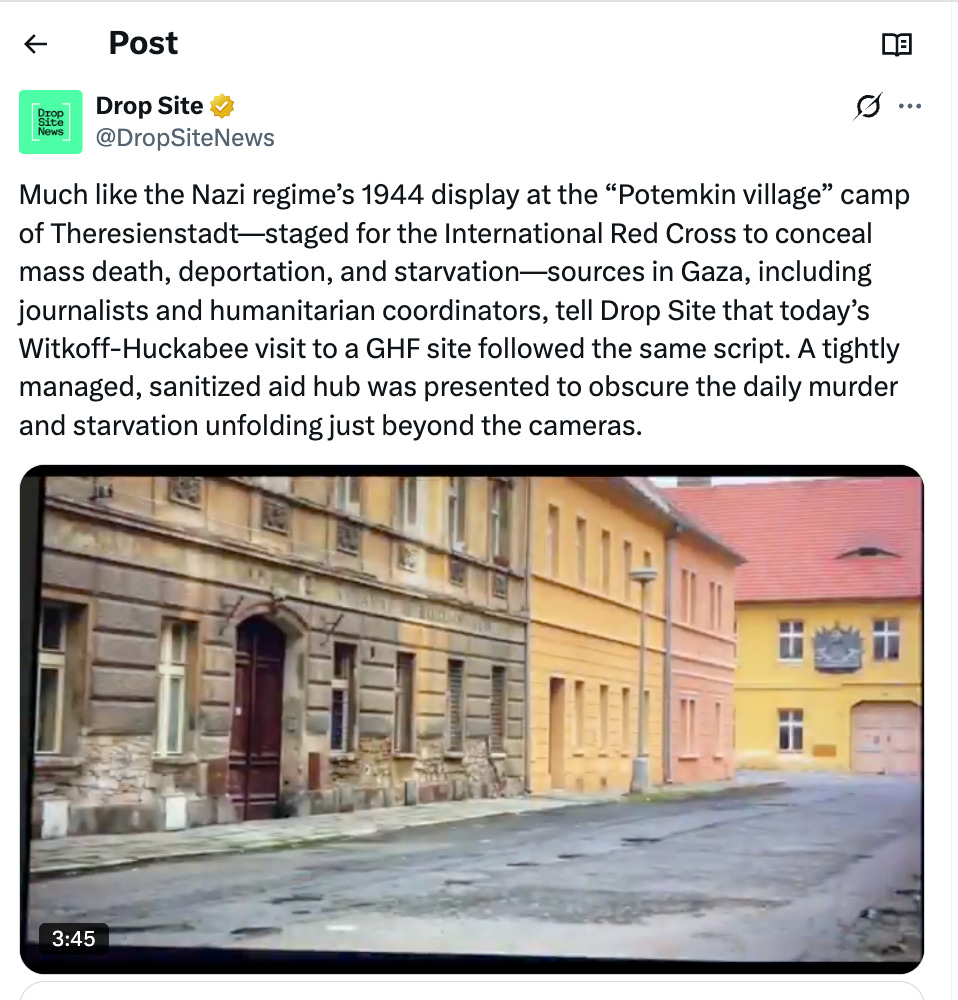
The next day, in a Times profile, Huckabee said, “I tell people every day I wake up and I look at the president’s tweets to see if I’ve been fired.” (NYT)
Trump, for his own part, said of the US’s $60 million investment in GHF, “It’s a shame because I don’t see the results of it. And we gave it to people who are, in theory, watching over it pretty closely.” He again complained that nobody said thank you, but clarified that he didn’t need the thank you; he just wanted people to get fed. (Reuters)
Mass Murder
Israeli forces have killed at least 60,839 Palestinians since October 7, according to Gaza’s Ministry of Health, though the true number is expected to be much higher. (Al Jazeera)
The BBC documented 160 cases of children shot in Gaza—95 in the head or chest—and investigated the IDF sniper killings of two-year-old Layan al-Majdalawi and six-year-old Mira Tanboura, both shot in areas where there was no fighting. (BBC)
Al Jazeera shared footage of a child in the hospital with a bullet protruding from her skull. (Al Jazeera)
Israel shelled the Palestine Red Crescent Society’s headquarters in Khan Younis, killing aid worker Omar Isleem and injuring three others. (BBC)

Ahmed Saeed al-Abadlah, a 30-year-old Palestinian man with Down syndrome, was found torn in half and decomposing near his home days after vanishing during his usual morning walk from a displacement camp in Khan Yunis; his mother believes he was killed by a drone. (Palestine Chronicle)

Loss of Innocence
The New Yorker reported on how mental health workers in Gaza, themselves displaced and grieving, are attempting to treat mass psychological collapse. “Some don’t speak,” said therapist Nour Jarada of child patients. “They stare, sometimes scream. Most cry for hours, unblinkingly.” (TNY)
Israeli soldiers who grew up in Gaza’s illegal settlements are returning “home” in uniform and feeling a deep nostalgia for the very landscapes they helped destroy, as they navigate “altered landscapes once filled with life, community and” [their own] “childhood innocence.” (Ynet)
Growing Consensus
Former Israeli attorney general Michael Ben-Yair said that “Jews, who went through a genocide 80 years ago, are committing genocide in Gaza.” (MEE)
Leaders of Physicians for Human Rights Israel and a law professor at the University of Haifa argue that Israel’s systematic dismantling of Gaza’s health system—through targeted bombings, denial of medical supplies, and killing of over 1,800 health workers—constitutes a slower, cumulative form of genocide designed to evade international scrutiny and ensure prolonged mass death, even after the war ends. (NYT)
David Grossman, one of Israel’s most celebrated authors, says he can no longer avoid calling Israel’s campaign in Gaza a genocide—“not after what I’ve read, not after the images I’ve seen.” (Guardian)
Textbook Colonialism
Historian Rashid Khalidi called Israel’s effort to arm Gaza clans “the oldest colonial strategy in the book,” learned from the British, and said it has already succeeded in “sowing utter chaos”—deliberately undermining Palestinian unity so that Israel can avoid negotiations or dealing with a unified Palestinian leadership. (WaPo)
A Well-Thought-Out Plan
Four months after Israel broke its March ceasefire and reimposed a blockade on Gaza, Israeli analysts are calling the campaign “a total failure,” with no meaningful gains in the war’s stated goals—only the extension of Netanyahu’s political survival. (NYT)
Last week, the Israeli military launched an offensive in Beit Hanoun for the fifth time in two years, this time claiming they’ll destroy the Hamas battalion “within a week.” On Saturday, after three “Hamas operatives” surrendered, the IDF declared victory. (Times of Israel, Times of Israel)
Israel threatened to annex parts of Gaza if Hamas doesn’t accept its ceasefire terms. (Times of Israel)
Ministers Ben-Gvir and Smotrich pressured the IDF to present a plan to fully conquer and destroy Gaza City, home to 1.2 million people. Netanyahu refused to rule it out, even though an army chief warned it would take months, require mass mobilization, and effectively mean abandoning the hostages. (Haaretz)
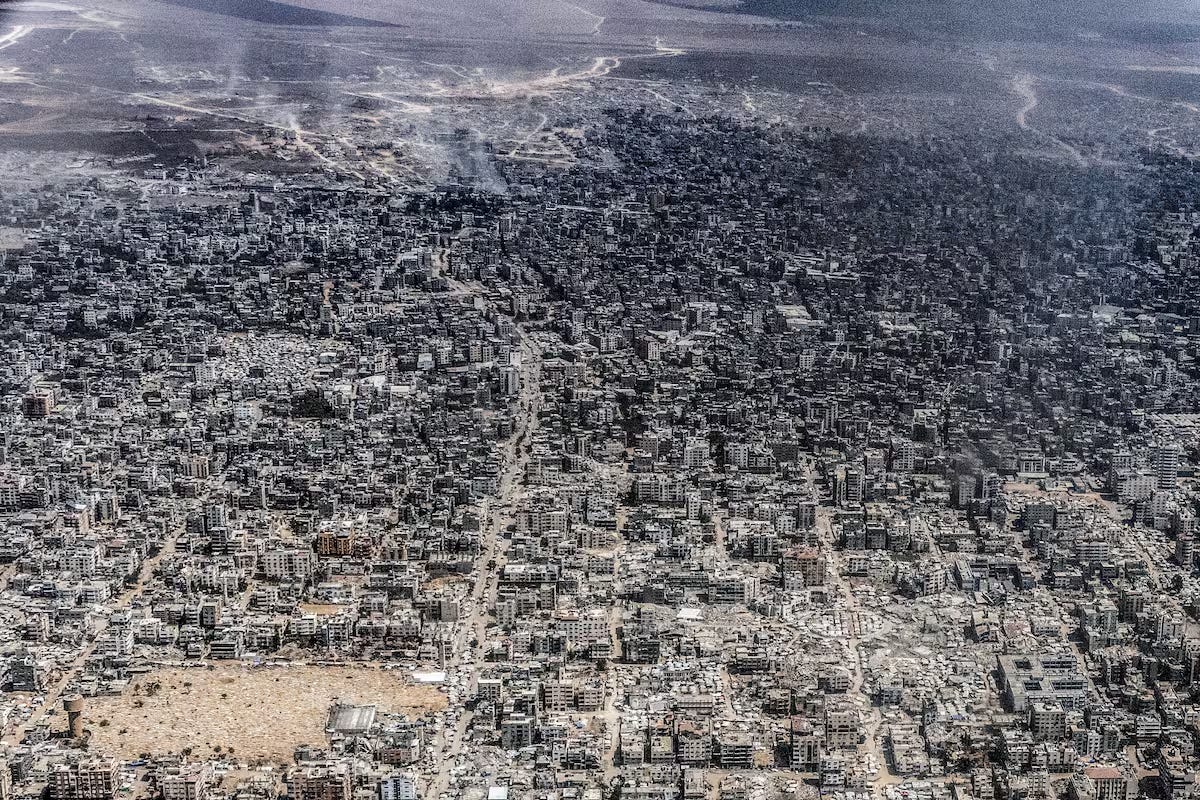
The Day After
A new poll finds that 52% of Israelis support rebuilding Jewish settlements in Gaza. (JNS)
Hundreds of ultranationalist Israelis marched to the Gaza border demanding resettlement, as far-right ministers called on the military to let settlers scout the ruins of Beit Hanoun and prepare to rebuild. (Times of Israel)
At a conference marking 20 years since Israel’s disengagement from Gaza, Smotrich declared that reestablishing Israeli settlements in Gaza is no longer “wishful thinking” but a “realistic work plan.” (Haaretz)
Ceasefire
Ceasefire talks remain deadlocked, with Israel rejecting Hamas’s demands for a permanent ceasefire, full Israeli military withdrawal from Gaza, and guarantees of reconstruction and humanitarian access—and insisting on Hamas’s disarmament, which the group says it will not accept without the establishment of a fully sovereign Palestinian state. (Reuters, Anadolu)
Hostages, Abandoned
Families of Israeli hostages left a Saturday meeting with US envoy Steve Witkoff angry and disillusioned, accusing him of offering only empty slogans and no real progress. (ynet)
“We tried everything — military pressure, displacing people, blocking food, conquering areas, eliminating Hamas commanders — none of that brought all of the hostages back,” the mother of hostage Matan Zangauker said. “The one thing we haven’t tried is a comprehensive agreement in exchange for ending the war.”
Hamas and Palestinian Islamic Jihad released videos of two Israeli hostages, Rom Braslavski and Evyatar David, both visibly emaciated.

Eyvatar David says in the video, “I don’t know what I’m going to eat today … I haven’t eaten in days … I’ve barely got drinking water.” The video concludes with text over the screen: “Only a ceasefire agreement brings them back alive.” (Al Jazeera)
Israeli ministers Gideon Sa’ar and Amichai Chikli shared images of David’s emaciated condition, despite his family’s explicit plea not to publicize the footage. (ynet)
Braslavksi’s father says Netanyahu and the IDF have ignored his repeated requests for a meeting. (INN)
Smotrich said the response to the hostage videos must be total destruction, “with full force, and without pause.” (INN)
Israeli Heritage Minister Amichai Eliyahu said the remaining hostages in Gaza should be redefined as “prisoners of war” and deprioritized in favor of “total victory.” (INN)
In May, the Gazan writer and Pulitzer Prize winner Mosab Abu Toha was smeared as a “modern-day Holocaust denier” for pointing out the same distinction:
West Bank
Daily Pogroms
Israeli settlers raided the West Bank village of Silwad overnight on Wednesday as soldiers stood by, torching 12 vehicles and several homes, and killing 45-year-old Khamis Abdul Latif Ayyad, a Palestinian American and former Chicago resident, as he tried to extinguish the flames. He is the second Palestinian American to be killed by settlers in July. (Haaretz)
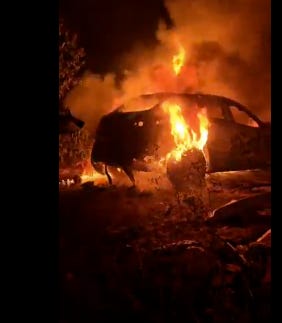
Settlers attacked the Palestinian village of Susya overnight on Friday, breaking into homes, spraying residents with pepper spray, and setting fires. (X)
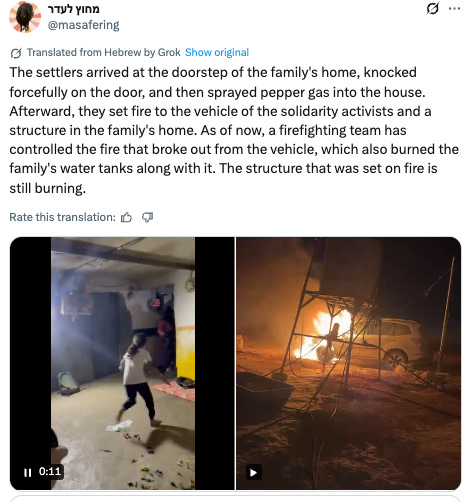
Israeli settlers torched a building and forced Palestinians to flee Mu’arrajat again, just days after the High Court ordered the army to coordinate their return, following the community’s initial expulsion by settlers in July. (Haaretz)
Settlers have established a new illegal outpost near the village of Kisan, east of Bethlehem. (MEE)
National Security Minister Itamar Ben Gvir led a settler incursion into East Jerusalem’s Al-Aqsa Mosque on Sunday, the same act of deliberate incitement that Hamas named its October 7 attack, “Operation Al-Aqsa Flood,” after. (Times of Israel)
State Violence
Israeli forces shot and killed 27-year-old Samer Suleiman at the northern entrance to Hebron, then seized and withheld his body. (MEE)
Two Palestinian girls, 12 and 16, were wounded by Israeli army gunfire in Jenin on Sunday. (MEM)
American Hostage in Israel
A 16-year-old Palestinian-American boy, Muhammad Zaher Ibrahim, has been held by Israel in Meggido prison, long known for torture, for five months over rock-throwing accusations, cut off from his family. He has lost 26 pounds and contracted scabies. Before his arrest, he had planned to join his cousin, Saif, at the family ice cream shop in Florida. In July, Saif was beaten to death by settlers. (Guardian)
No word on why President Donald Trump, Secretary of State Marco Rubio, Ambassador Mike Huckabee, Senator Rick Scott, Senator Ashley Moody, or Governor Ron DeSantis have failed to mention that their teenage constituent is being held hostage by a foreign state—or to seek justice for his cousin, a US citizen murdered by settlers.
Revenge Bulldozers
Israeli bulldozers demolished the only Palestinian seed bank in the West Bank, home to over 70 indigenous seed varieties, many found nowhere else. (New Arab)
Israel is moving to demolish a five-story apartment building in East Jerusalem, displacing 140 Palestinians. Residents believe it’s retaliation for the former mufti of Jerusalem, the most important Muslim figure in the city, having once lived there. (Haaretz)
Avraham Zarviv, an IDF reservist who bragged about razing 50 buildings a week in Gaza and called for its resettlement by Jews, lives in a West Bank settlement home that’s been under an unenforced Israeli demolition order for 25 years. (+972)
War on Journalists
Since October 7, Israel has arrested at least 140 journalists in the West Bank, often without charges. (Le Monde)
Friendly Fire
An Israeli settler teen was seriously wounded near the illegal Tzur Harel outpost after a reserve soldier opened fire on “masked men” throwing stones at vehicles near Beit El, likely mistaking them for Palestinians. (Haaretz)
Israel
Torture Camps
As of early July, Israel is holding 10,800 Palestinians in its prisons, including more than 440 children, not counting those detained in military camps, according to the Palestinian Prisoners and Ex-Prisoners Affairs Authority. (MEE)
The Palestinian Return Centre submitted testimony to the UN detailing widespread torture and abuse of Palestinian detainees since October 7, including beatings, starvation, rape, and amputations without anesthesia. (MEE)
A 60-year-old Palestinian man from Gaza has died in Israeli custody, bringing the post-October 7 prison death toll to 75. (Anadolu)
Prominent Palestinian journalist Nasser al-Laham says Israeli prison guards at Ofer beat him, filmed him naked while blindfolded, and threatened to publish the videos. (Times of Israel)
Beacon of Democracy
Finance Minister Smotrich demanded that the Tax Authority revoke Physicians for Human Rights’ tax-exempt status after the group accused Israel of genocide. (INN)
Popular Opinion
The wife of Israel’s incoming Shin Bet chief wrote in her new book that “destroying houses in Gaza is a commandment” and described the war as “the will of God” and “a national birth.” (Haaretz)
Suicide Crisis
Seven Israeli soldiers died by suicide in July. (MEE)
US (and the World)
Palestinian Statehood
At the UN, 15 countries led by France and Saudi Arabia launched the “New York Declaration,” reaffirming “unwavering support” for a two-state solution and calling on Israel to recognize a Palestinian state. The US was not one of them. Netanyahu accused them of rewarding “Hamas’s monstrous terrorism.” (France24)
Gideon Levy wrote in Haaretz that Europe’s recognition of a Palestinian state is a cowardly fig leaf that lets Israel off the hook for mass starvation and slaughter in Gaza, arguing that only “crippling sanctions” will stop the genocide. (Haaretz)
Totally Normal Response
The Trump administration will deny visas to Palestinian Authority and PLO officials in retaliation for growing international recognition of Palestinian statehood. (BBC)
Trump threatened to kill a US–Canada trade deal after Prime Minister Mark Carney announced plans to recognize a Palestinian state. (Bloomberg)
Movement
Zohran Mamdani now leads Jewish voters by 17 points in the NYC mayoral race, winning 43% overall—including 67% of Jews under 45—despite his criticism of Israel and the smear campaign branding him antisemitic. (Forward)
A new Gallup poll shows only 32% of Americans approve of Israel’s war on Gaza—down 10 points from last year—with just 9% of under-35s backing it and only 6% expressing a favorable view of Netanyahu. (Al Jazeera)
For the first time, a majority of Senate Democrats voted to block arms sales to Israel, up from just 15 in April to 27 now. The resolution received zero Republican support and failed. (Zeteo)
Senator Angus King, who voted to block the sale after declining to do so in April, said, “I cannot defend the indefensible. Israel’s actions in the conduct of the war in Gaza, especially its failure to address the unimaginable humanitarian crisis now unfolding, is an affront to human decency.” (Anadolu)
Twenty-one Senate Democrats signed a letter led by Chris Van Hollen demanding that Trump cut funding to the Gaza Humanitarian Foundation. (Guardian)
Among those who did not sign the letter: Chuck Schumer, Kristen Gillibrand, and Corey Booker, who, one day earlier, had decried the starvation in Gaza and said, “The strategy of the Gaza Humanitarian Foundation has not worked.”
I highly recommend watching Krystal Ball and Saagar Enjeti’s interview with Senator Elissa Slotkin about the genocide.
Vichy on the Hudson
One of the world’s top Middle East scholars, Rashid Khalidi, has withdrawn from teaching at Columbia this fall, calling the university’s deal with the Trump administration—including adoption of the IHRA definition of antisemitism, classroom surveillance, and mandatory ADL trainings—a betrayal of academic freedom that makes honest teaching on Israel and Palestine impossible. (Guardian)
Checking in on Biden World
Anthony Blinken, who helped orchestrate the genocide, believes that maybe the war would be over if the student activists had protested Hamas. (X)
Thanks for reading. If you’ve made it this far and can afford it, consider upgrading to a paid subscription.
As always, I welcome your thoughts, questions, etc. in the comments.

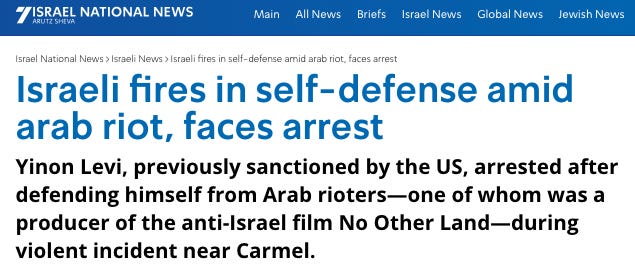
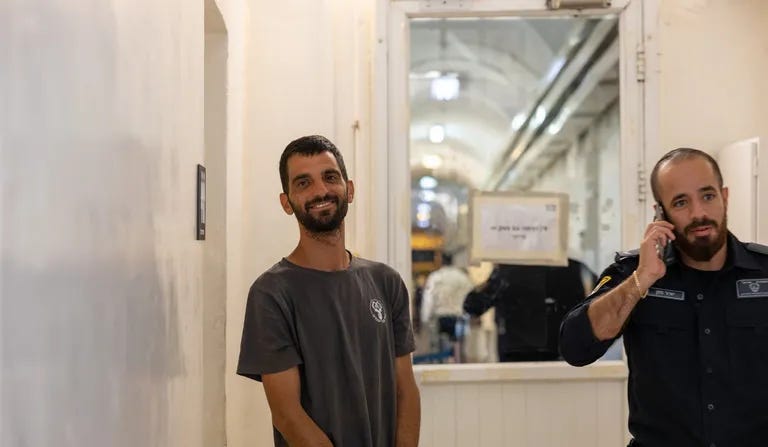

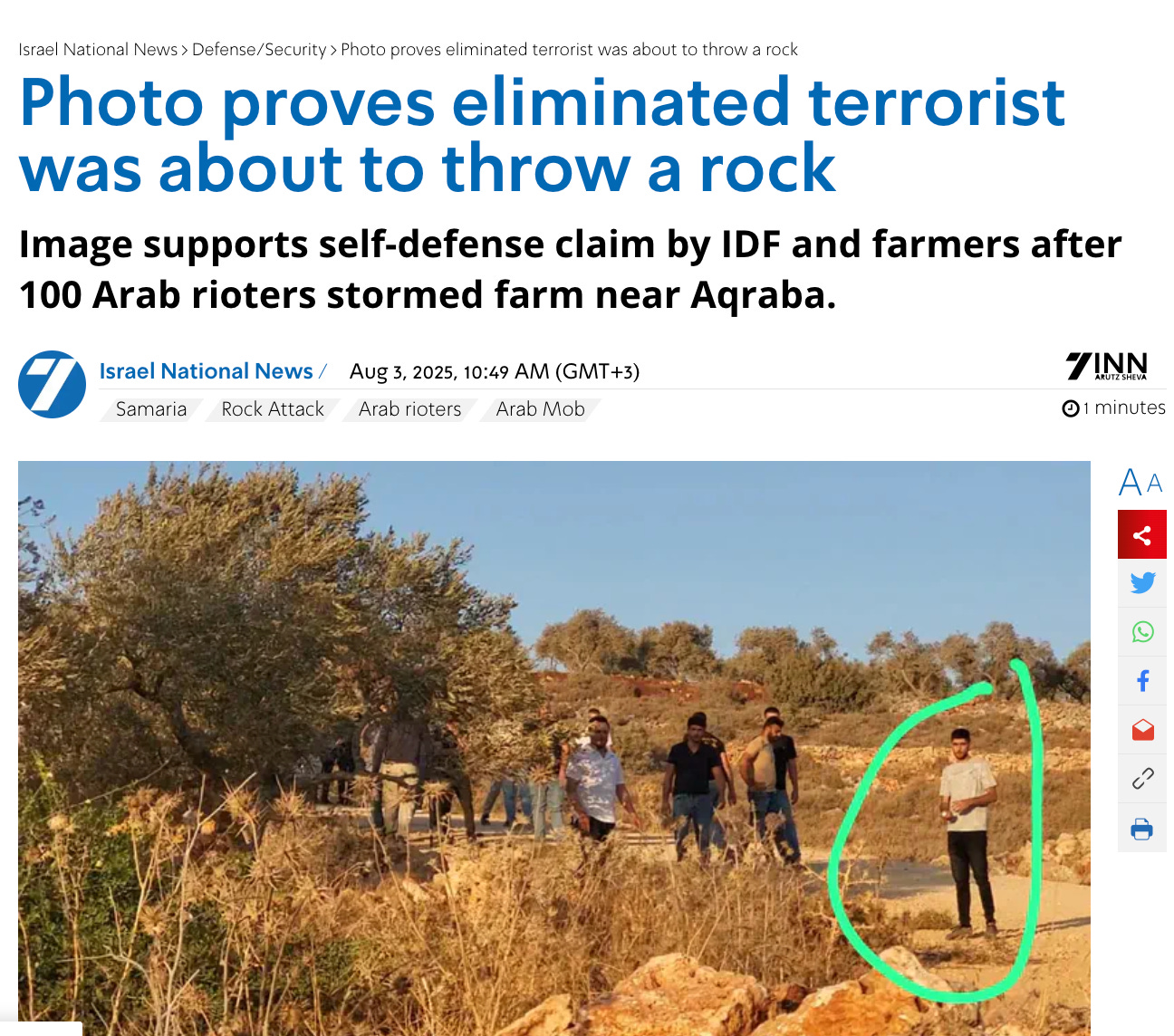

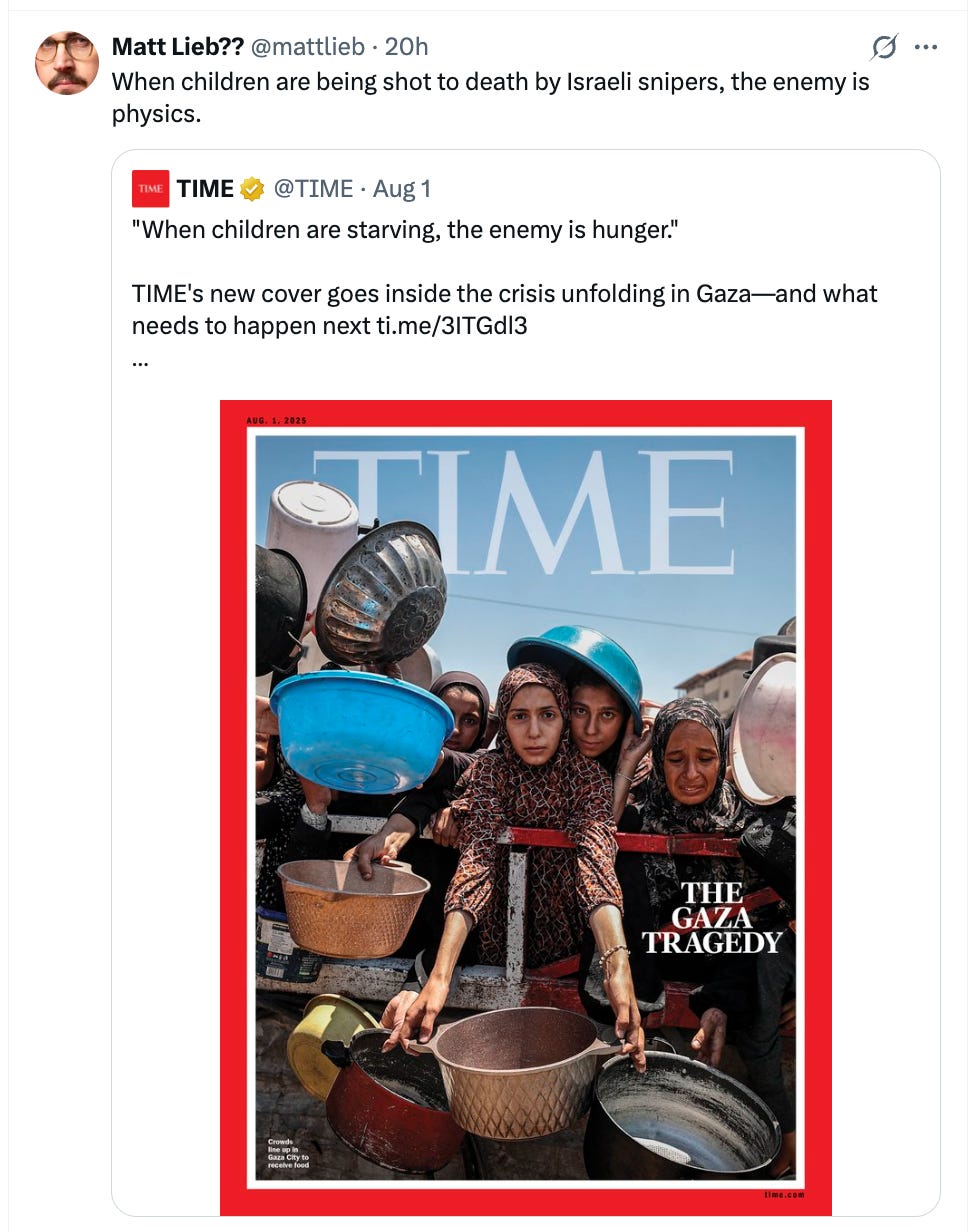
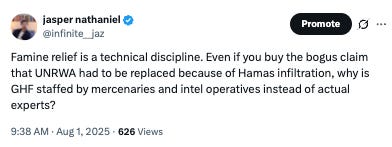
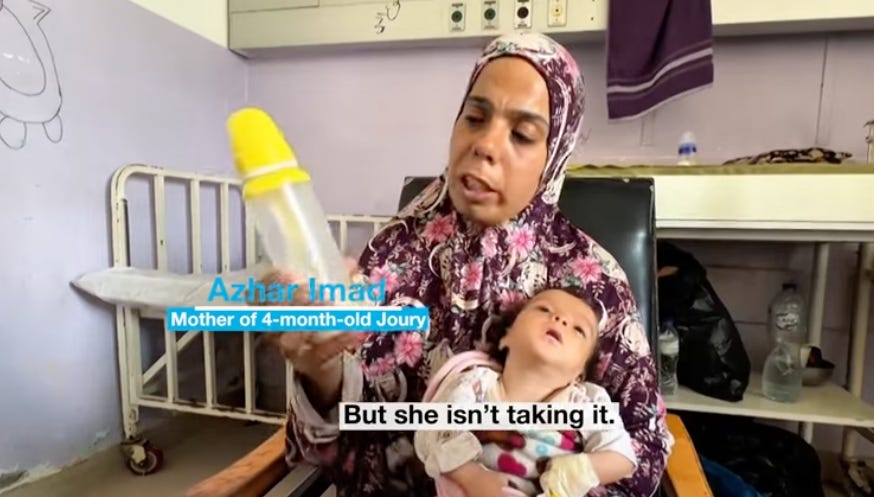
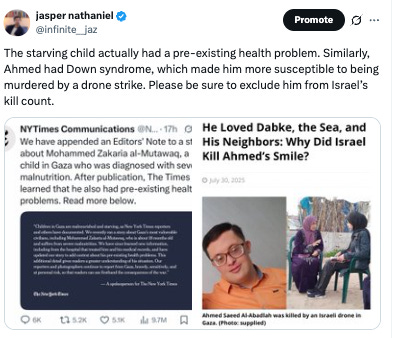


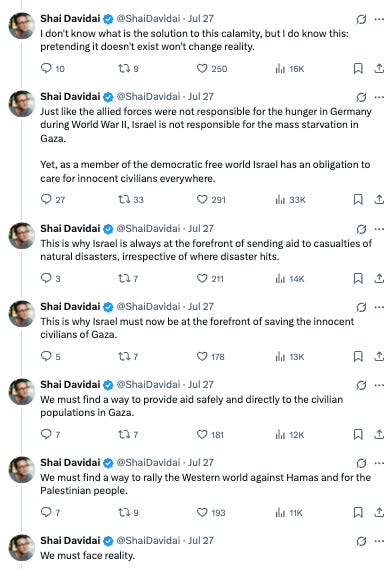
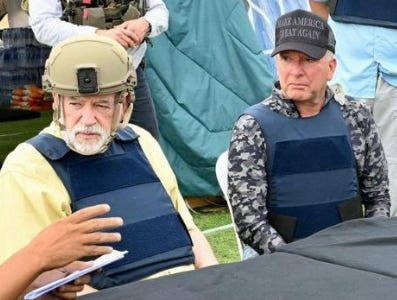
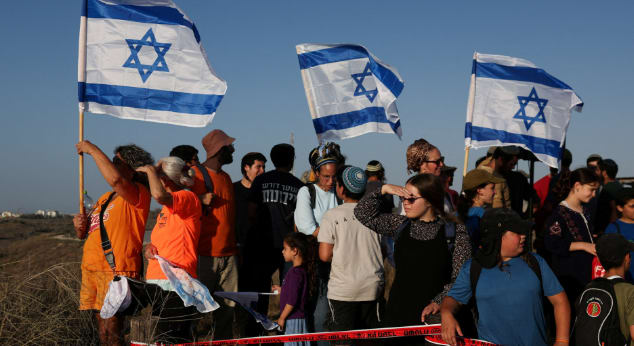
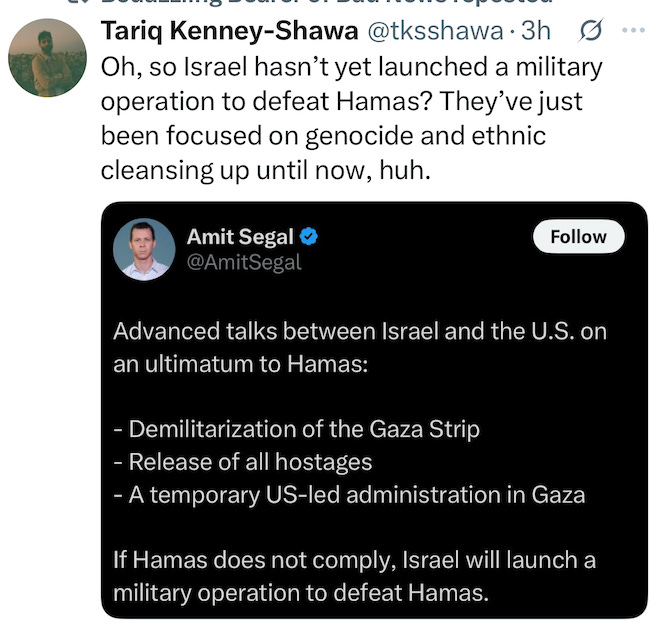
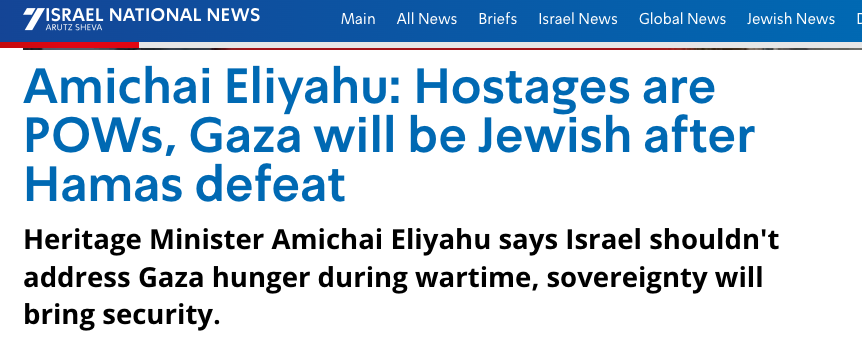
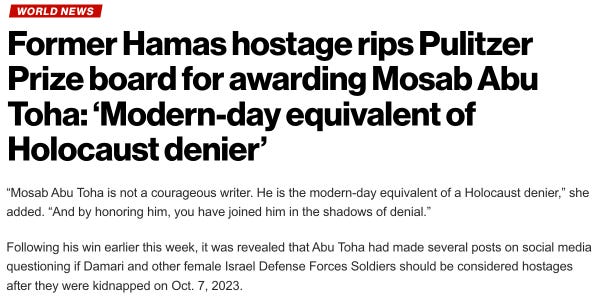


I hate how people pretend the settlers are some sort of anomaly, as if the entire project of Zionism wasn’t built around precisely what they’re doing.
I agree that if one reads nothing else of the round-up, the introduction is an absolute must-read.
I am deeply, deeply grateful for your compiling the full story of Yinon Levi's killing of Awdah Hathaleen & his otherwise terrorizing behavior in Umm al-Khair, which I had not read about before (and for your contextualizing it within the broader narrative, legal and logistical cover for violent settler nationalism the Israeli government & media quite willingly provide). Awdah's words from his op-ed a year before his death, about the reverberation of this traumatic violence as expressed within the body of his son (and Palestinian children in the West Bank at large) and his feeling of it as an inescapable fate is incredibly haunting.
"Postmortem detention" is a phrase so conceptually and rhetorically horrifying I am without words in processing that it exists as aptly descriptive language of actual, practiced policy.
Thanks for this morally necessary work. I hope you are taking good care, given your connection & intimacy with the human souls mentioned in these pieces.